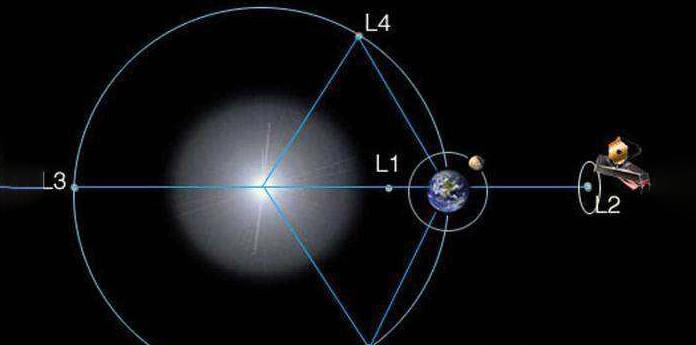It was a full 15 years delay from the original plan, but the James Webb Space Telescope was finally launched on December 25, 2021.
It then travels to the second Lagrange point, 1.5 million kilometers from Earth, as planned, and orbits in a halo orbit with a radius of 800,000 kilometers. What is Lagrange Point? It is a gravitational equilibrium point calculated by the mathematician Lagrange. When an object is subjected to the gravitational pull of two celestial bodies at the same time, 5 gravitational equilibrium points are generated around the two celestial bodies, and if the object is placed on these 5 Lagrange points, then the object can maintain a fixed relative position with the two celestial bodies. There is such a gravitational equilibrium point between any two celestial bodies, between the earth and the sun, and between the earth and the moon, and the Queqiao satellite launched by China is located on the second Lagrange point between the earth and the moon.

Since there are 5 Lagrange points between the Earth and the Sun, why does the Weber telescope have to be placed on the second Lagrange point? The question has to start with the Weber telescope itself.
Before the Launch of the Webb Space Telescope, the most familiar space telescope was the Hubble Space Telescope, but hubble telescope and Webb telescope are not the same thing, hubble telescope is an optical telescope, and webb telescope is an infrared telescope. Because the Weber telescope is designed to observe the deep space of the universe, its mission is to capture the light emitted by galaxies at the beginning of the universe. You know, the universe has been expanding since its birth, and the galaxies that were born at the beginning of the formation of the universe are very far away from us, so why can we see them with the Weber telescope?
The wavelength of light in the process of propagation will change, this wavelength change is called redshift or blueshift, redshift refers to the wavelength of the longer, blueshift refers to the wavelength of shorter.
So why does the wavelength change? It's because the distance has changed. Graphically speaking, suppose we now have a spring dragging two small balls, when the distance between the two small balls becomes farther, the spring will be elongated, if you think of the spring as a wavelength, then the wavelength becomes longer. Conversely, if the distance between the two balls is shortened, the spring will be compressed, that is, the wavelength will become shorter. In the universe, most celestial bodies are moving away from us, so when the light they emit reaches Earth across distant interstellar space, the wavelength becomes longer, that is, the redshift occurs.
Around us, only the Andromeda galaxy has a clear tendency to move toward the Milky Way, so the wavelength of light it emits will become shorter, so it is an extremely rare galaxy in the universe that exhibits a blue shift.
On the other hand, the space itself is in a continuous expansion, and the expansion of space will also lead to an increase in the distance of light propagation, so it will also lead to the occurrence of redshift. In addition to the increase in distance and the expansion of space, there is a third factor that causes the redshift phenomenon to occur, which is gravity. Any massive object has gravity, and galaxies with hundreds of billions of stars have a strong gravitational force, and gravity is a geometric effect, its essence is the curvature of space-time, and the curved space-time means that the distance of light to pass increases, so the wavelength will also be correspondingly edged, resulting in redshift.
The light propagation of galaxies to the Earth will produce a redshift phenomenon, and the more distant the galaxy, the more obvious this redshift phenomenon may be, so the ultraviolet rays emitted by these galaxies will become infrared after reaching the Earth because of the redshift phenomenon, so we need an infrared telescope to observe, and the James Webb Space Telescope is such an infrared telescope.
However, although infrared telescopes are powerful tools for observing the deep space of the universe, they have a very obvious problem, that is, they are extremely susceptible to interference. What is infrared? The essence of infrared is temperature, and the essence of temperature is motion, and there is no absolute stationary in the universe, there is no absolute zero, that is to say, all objects will emit infrared, and the infrared emitted by the earth and the sun will cause great interference to the Weber Space Telescope.
In order to minimize the infection, it is necessary to place the Weber telescope on the second Lagrange point, because the remaining 4 Lagrange points are facing both the sun and the Earth, and only at L2 point, the sun's light is blocked by the Earth, which minimizes infrared interference.
That being the case, why not simply fix the Webb telescope to L2 point and let it orbit in a halo orbit around L2 point? Because this can make the communication parabolic antenna and the sunlight at an angle of 28 degrees, both to avoid sunlight from affecting communication, but also to let part of the light shine on the Weber telescope, in order to provide energy for the solar panels of the Weber telescope, L2 point itself is not very stable, so a small part of its own power is needed to maintain the stability of the orbit.